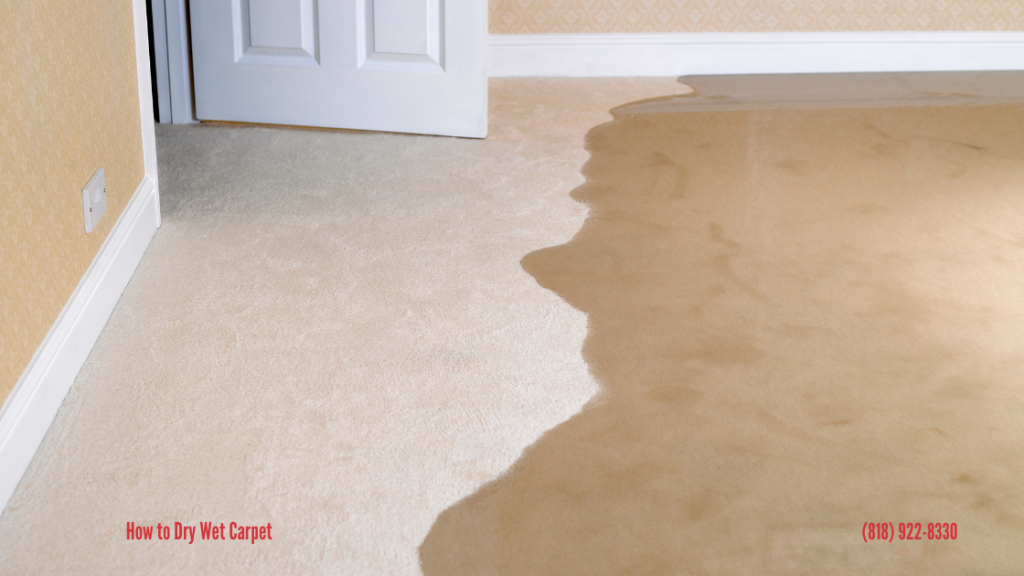Table of Contents
How to Dry Wet Carpet:
When a flood hits your home, carpets are often among the first items affected. Water-soaked carpets, if left unattended, can quickly become breeding grounds for Mold, mildew, and unpleasant Odors. At PuroClean of San Fernando, we understand the importance of acting fast to prevent further damage. Here is a step-by-step guide on how to dry your wet carpet after a flood and why calling a professional restoration company is often the best option.
Steps to Dry Wet Carpet After a Flood:
- Identify and Fix Water Source: Stop the leak before starting the drying process.
- Remove Affected Items: Discard damaged materials and move furniture off the carpet.
- Pump Out Excess Water: Use a water pump or vacuum to extract water from the area.
- Remove and Dry the Carpet: Take the carpet out, discard the padding, and dry both thoroughly.
- Dry the Space: Use fans or dehumidifiers to dry the room and prevent mold.
- Replace Carpet Padding: Install new padding to avoid mold and mildew growth.
- Deodorize and Disinfect: Clean and sanitize the space to eliminate odors and bacteria.
- Reinstall the Carpet: After drying, lay the carpet back down.
For professional water damage restoration in San Fernando, contact PuroClean at (818) 922-8330.
Steps to Take Before Drying Your Wet Carpet | How to Dry Wet Carpet
1. Identify and Fix the Water Source
Before you begin drying your carpet, it is crucial to locate the water source and stop it from causing further damage. Whether it is a leaky pipe, roof, or window, shutting off the water supply and fixing the problem should be your first step.
2. Remove Affected Items
Check your home for any items that may have been damaged during the flood, such as books, newspapers, or cardboard boxes. Discard items that cannot be salvaged and dry the ones that are still usable.
3. Move Heavy Furniture Off the Carpet
To properly dry your carpet, you will need to remove any heavy furniture that could hinder the process. This might include sofas, refrigerators, or televisions. Given the weight of water-soaked items, you may need assistance to move these pieces.
People also read: Does Wet Drywall Always Need to Be Replaced?

Steps for Drying a Wet Carpet | How to Dry Wet Carpet
1. Assess the Type of Flood Damage
Before proceeding with carpet drying, it is essential to assess the type of flood damage. Was the flooding caused by a leaking roof, a broken pipe, or heavy rainfall? Identifying the source will help you choose the right restoration steps.
2. Pump Out the Water
Once the source of the water has been stopped, use water removal equipment such as pumps or wet vacuums to extract the excess water from your home. Ensure the affected areas are as dry as possible before moving to the next step.
3. Remove the Carpet and Dry It
A water-soaked carpet is heavy and difficult to manage. Carefully remove the carpet from the floor and set it aside to dry. In most cases, the carpet padding underneath will need to be discarded and replaced, as it tends to absorb water and harbor Mold.
4. Dry the Affected Space
After removing the carpet, dry the affected area thoroughly. If possible, open windows and doors to allow air circulation. You can also use dehumidifiers and fans to speed up the drying process and prevent Mold growth.
5. Replace the Carpet Padding
Mold thrives in damp carpet padding, so it is essential to replace it with a new one. Installing fresh padding will help keep your home safe from Mold and other health risks.
6. Deodorize and Disinfect
Once the area is dry, apply disinfectant to the floor to kill any bacteria that may have developed during the flood. Deodorizing the space will also help eliminate any lingering musty smells.
7. Install the New Carpet Padding
Before laying the carpet back down, ensure the new padding is in place. This extra layer not only adds comfort but also helps protect your home from future moisture-related issues.
8. Reinstall the Carpet
Once everything is dry and sanitized, you can reinstall the carpet. Be sure to follow all the previous steps carefully to avoid long-term damage or Mold growth.
Why You Should Call PuroClean San Fernando | How to Dry Wet Carpet
While many homeowners might attempt to dry their carpets themselves, it is important to recognize that DIY methods can be risky. If the drying process is not done thoroughly, Mold and mildew can develop, leading to further damage and potential health hazards. At PuroClean of San Fernando, we use advanced equipment and techniques to ensure that your carpet is properly dried and restored. Our experts can save you time, effort, and the stress of dealing with water damage on your own.
Conclusion
When your home experiences a flood, drying your carpet quickly is essential to avoid long-term damage and health risks. Although DIY solutions may seem cost-effective, hiring a professional like PuroClean of San Fernando guarantees that the job will be done right. We have the expertise and equipment needed to thoroughly dry and restore your carpets, ensuring your home remains safe and comfortable.
For reliable water damage restoration services, contact PuroClean of San Fernando at (818) 922-8330. We are here 24/7 to help you with all your water damage emergencies.




 PuroClean of San Fernando
PuroClean of San Fernando